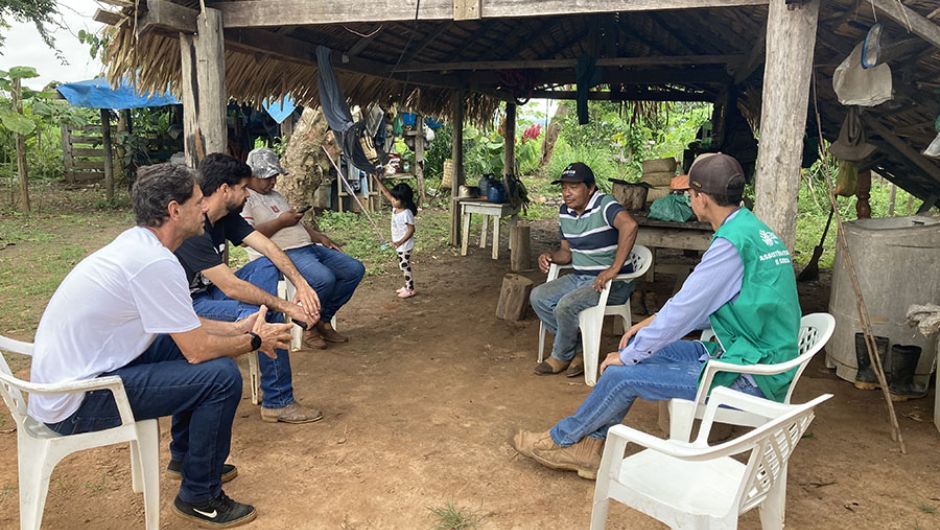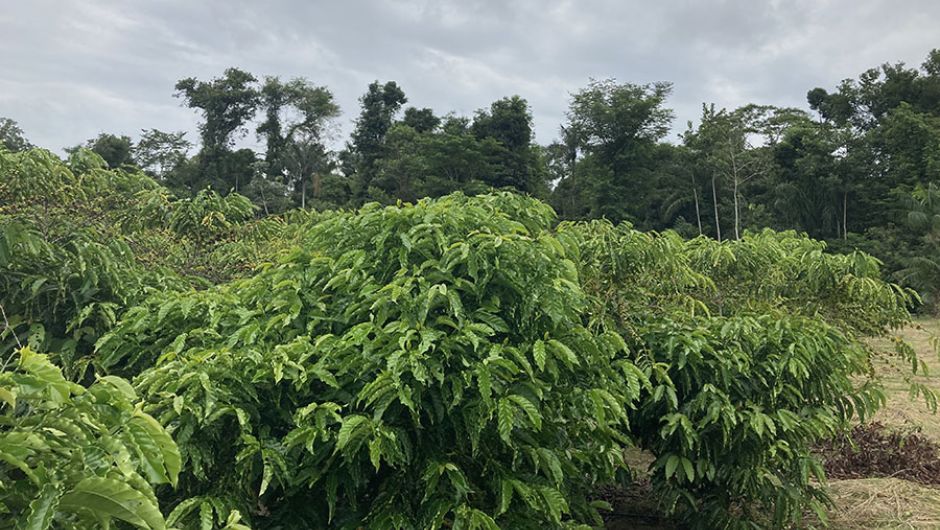Mosaic Fertilizers opens vacancies for the Palmeirante (TO) Mixing Unit
In total, there are 18 job openings scheduled to begin in June this year; The project is still in progress

An unprecedented study carried out by Embrapa proves the sustainability of coffee farming in Matas de Rondônia. Through the use of geotechnology and the support of satellite images, the work recorded zero deforestation in seven of the 15 municipalities in the region, between the years 2020 and 2023. Throughout the region, traces of removal of forest areas were found in less than 1% of the total area occupied by coffee growing. The work also demonstrates that more than half of the territories of the 15 municipalities combined are covered by forests, which totals 2,2 million hectares of native vegetation.
Coffee plantations and forest areas in the region were identified in a Geographic Information System (GIS). Leader of the work, Embrapa Territorial (SP) researcher Carlos Ronquim explains that the team crossed data from official sources and used high spatial resolution satellite images as support to define agricultural and forestry areas in polygons. “So, we compared the 2020 and 2023 scenarios to observe advances in coffee plantations over forest areas. It is an unprecedented work and much awaited by local producers”, says the researcher.

The Rondônia Forests are responsible for more than half of Rondônia's coffee production. Regional production is growing and seeking to expand the market for its product, special coffee. The region is the birthplace of “Amazonian Robusta”, the first variety to receive the Geographical Indication seal for sustainable canephora coffees in the world. The drink generated by Amazonian grain has been gaining prominence at national and international fairs and competitions as one of the most exotic and interesting from a sensorial point of view.
The presentation of the results of this work and tastings of coffee from Matas de Rondônia will be part of the celebrations of Embrapa's 51st anniversary on April 25th. The presence of the President of the Republic, Luiz Inácio Lula da Silva, is expected at the ceremony.
According to Cafeicultores Associados da Região das Matas de Rondônia (Caferon), in addition to the Brazilian market, Amazon Robusta is sold to countries in South America, Asia and Europe. Commercial negotiations are not simple. To expand the buyer market, agricultural products from the Amazon face greater pressure to prove the sustainability of the process, as stated by Juan Travain, rural producer and president of Caferon. “We knew that coffee growing in the region is sustainable, but we did not have this scientifically based proof. And the study demonstrates this. This data needs to reach the world. We want to publicize them at events with great national and international impact”, he informs.
The study also points out factors that can help the local chain meet the demand of new markets, without putting pressure on forest areas. Coffee growing in the region has been increasing productivity through the application of technologies, and can also occupy vast areas of pastures, which represent 1,9 million hectares, a size slightly less than half of the region's entire area.
“We will work to occupy these areas again, but in a more sustainable and robust way, as we have more technologies. The Amazon will be a coffee granary for the world, in a more sustainable way, complying with all standards”, highlights Travain.
In addition to environmental conservation by producers, the study highlights the contribution of indigenous reserves, which preserve and conserve large “blocks” of primary native forests totaling 1,2 million hectares. Together, these areas of native vegetation reach 56% of the entire territory of the Rondônia Forests, or 2,2 million hectares (ha).

Identifying coffee plantations was not an easy task. Even with the support of high spatial resolution satellite images, it was not possible to automate the recognition of coffee trees, as the largest concentration of trees is found within small rural properties, being confused with other crops, or even forest edges. .
Of the 37 thousand rural properties in the Matas de Rondônia region, declared in the Rural Environmental Registry (CAR), less than 9 thousand are dedicated to coffee growing, and, of these, 95% are small family properties, with 3,5 ha cultivated with coffee, average.
Ronquim describes the work as arduous, requiring the involvement of many technicians, including researchers, analysts and scholarship holders.
Embrapa Rondônia (SP) researcher Enrique Alves, co-author of the work, reports that the local chain is working with the state government to launch a zero deforestation program linked to coffee growing. This public policy proposal can be considered one of the first practical results of the project. It is based on Law No. 5.722/2024, which made the sustainable quality and appreciation of the Amazon Robusta a cultural and intangible heritage of the state of Rondônia. “We want a program not only to mitigate any environmental problems faced by coffee growing, but also to prevent any deforestation”, reinforces Alves. The proposal will be presented to state authorities and representatives of the coffee chain between May 9th and 10th, at an event in Cacoal (RO).
To reach the European market, Amazonian Robusta grains will need to demonstrate compliance with the European Union Anti-Deforestation Law (EUDR). Coffee is the commodity that concerns Brazil the most, as, unlike other items affected by the rule, it has a very large share in exports to the European bloc.
According to the Brazilian Coffee Exporters Council (Cecafé), Europe represents 48% of Brazilian exports. “These are markets that concentrate specialty coffees and sustainable coffees, which are today the two main ways of adding value”, says Marcos Matos, president of Cecafé.
Among agricultural commodities, coffee farming has the best conditions to prove compliance with the requirements of European laws, due to the technical capacity and the interest of producers in providing certifications for their products.
As the president of Cecafé points out, despite being regulated, the EUDR Law is not yet being applied. Matos explains that importers of Brazilian coffee from the European bloc must demonstrate that the merchandise or product complies with the anti-deforestation rule. Among the steps are production data, in addition to the geolocation of producing areas.
To assist importing companies in the commodity inspection process, European authorities can use maps with little detail on the use and coverage of Brazilian territory. These maps, however, have scale problems, which can pose risks. “There you identify coffee regions that have been experiencing deforestation for over fifteen years, both in Minas Gerais and Espírito Santo. Therefore, Brazil needs to have its own georeferenced mapping for coffee trees, in order to reduce risks and not point out deforestation where it does not exist”, says Matos.
For researcher Carlos Ronquim, proving the sustainability of coffee farming in the Matas de Rondônia region can serve as a scientific argument for the recurring criticisms of coffee production in Brazil, and especially in the Amazon biome, received abroad.
Mapping the use and occupation of coffee farming in Rondônia is part of the activities of the CarbCafé Rondônia project, led by Embrapa Territorial, in partnership with Embrapa Rondônia, Caferon and the Brazilian Credit Cooperative System, Rondônia division (Sicoob-RO). The research also proposes to survey the carbon stored in the soil and in coffee plantations and to prepare a carbon inventory of the grain's cultivation in the region in a second phase.


Receive the latest agriculture news by email
In total, there are 18 job openings scheduled to begin in June this year; The project is still in progress
With more than 420 thousand properties regularized in 2023, the State Government is campaigning to speed up the verification of another 260 thousand pending registrations